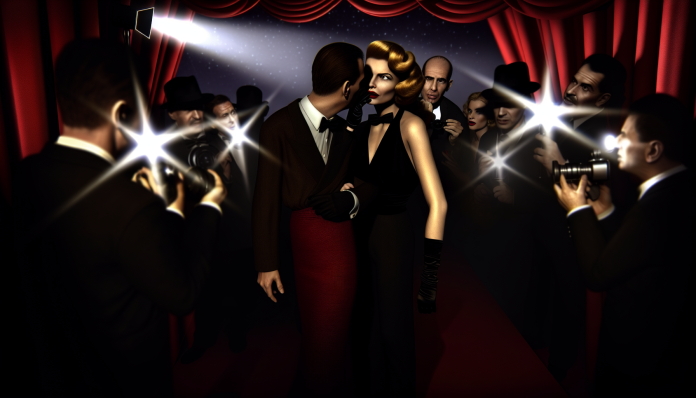A Star-crossed Love in Turbulent Times
In the annals of Hollywood history, few romances captivate the imagination quite like that of actress Sharon Tate and filmmaker Roman Polanski. Their love story, woven through the glamorous threads of 1960s Hollywood, would soon turn tragic and infamous, marking them as figures synonymous with both beauty and horror. Their relationship blossomed during a time of shifting societal norms and burgeoning counterculture, only to be shattered by the shocking events of 1969. As we dive into their tumultuous romance, it’s crucial to understand the prevailing moral code of the day and its radical transformation in contemporary perspectives.
The Scandal Unfolds
Tate, a rising star known for her ethereal beauty and notable roles in films like “Valley of the Dolls,” began dating Polanski, a Polish-born director famed for “Rosemary’s Baby,” in 1966. Their relationship embodied the free-spirited ethos of the 1960s, marked by openness and a rejection of traditional taboos.
Key Events:
-
Their Love Story: The couple became engaged in 1967, sharing a notoriously extravagant lifestyle filled with parties and playful Hollywood elite mingling. Their relationship was often depicted as ideal; Tate was the muse of Polanski, and he reveled in showcasing her beauty on-screen and off.
- Chilling Prelude: However, their romance faced chilling foreshadowing. Leading up to Tate’s horrifically tragic end in August 1969, the pair were at the epicenter of gothic and psychedelic cultural shifts in America. Tate, pregnant with their first child, was brutally murdered alongside friends by followers of Charles Manson, a crime that shook the nation and forever tainted Polanski’s legacy.
Reaction and Coverage:
At the time, the media’s response was sensational, focusing on the grisly details of the crime and painting a morbid portrait of the glamorous couple. Headlines screamed about the “beautiful victim” and “murdered innocence,” while commentators speculated on the implications for Hollywood and the counterculture movement.
“Sharon was a symbol of the era. Her death marked the end of the easygoing 1960s,” said journalist Joan Didion, reflecting the prevailing sentiment. The tragedy heralded a loss of innocence that resonated deeply within American culture.
Moral and Cultural Analysis
The shockwaves of Tate’s murder caused a seismic shift in societal attitudes. While the late 1960s embraced liberal values regarding love, relationships, and sexuality, the brutality of the crime incited a wave of fear, showcasing the darker side of a carefree youth culture.
- Consequences for Polanski: Following the murder of Tate, Polanski’s film career would inevitably be overshadowed by the specter of tragedy. His later controversies, including a conviction for unlawful sex with a minor, further complicated his complex legacy, intertwining personal demons with public perception.
Today’s Perspective:
If the Tate-Polanski love affair were to unfold in today’s context, the reactions may differ starkly.
-
Cultural Sensitivity: Modern audiences, particularly within the #MeToo movement, might approach Polanski’s actions and past with heightened scrutiny. The juxtaposition of his brilliance as a filmmaker against his personal failings would likely invoke serious debate regarding accountability.
- Understanding Tragedy: Meanwhile, discussions around Tate would shift from simply “the beautiful victim” narrative to a deeper examination of her life as an individual rather than solely as a cautionary tale — a celebration of her cinematic contributions and a recognition of the precariousness of life in Hollywood’s fast lane.
In the end, Sharon Tate and Roman Polanski’s relationship remains a poignant reminder of the complexities of love, fame, and the haunting repercussions of violence. The seduction of Hollywood glamour often belies terrifying shadows, phenomena that both past and present continue to grapple with.

